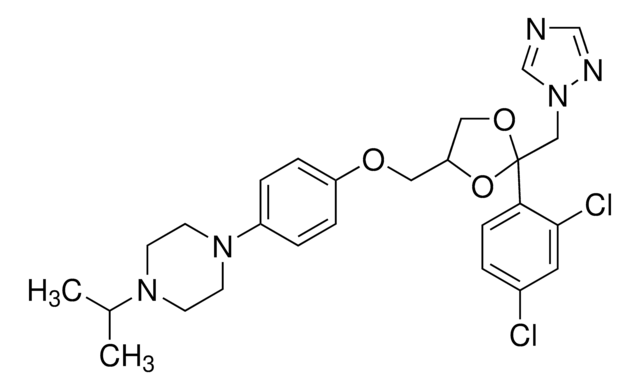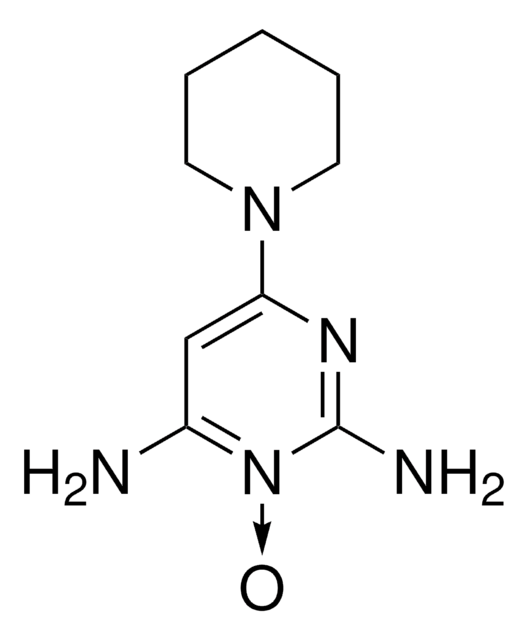Kluczowe dokumenty
1643703
USP
Terconazole
United States Pharmacopeia (USP) Reference Standard
Synonim(y):
(+-)-1-{4-[cis-2-(2,4-Dichlorophenyl)-2-(1H-1,2,4-triazol-1-ylmethyl)-1,3-dioxolan-4-ylmethoxy]phenyl}-4-isopropylpiperazine, Triaconazole
About This Item
Polecane produkty
klasa czystości
pharmaceutical primary standard
rodzina API
terconazole
producent / nazwa handlowa
USP
Zastosowanie
pharmaceutical (small molecule)
Format
neat
temp. przechowywania
2-8°C
InChI
1S/C26H31Cl2N5O3/c1-19(2)31-9-11-32(12-10-31)21-4-6-22(7-5-21)34-14-23-15-35-26(36-23,16-33-18-29-17-30-33)24-8-3-20(27)13-25(24)28/h3-8,13,17-19,23H,9-12,14-16H2,1-2H3/t23-,26-/m0/s1
Klucz InChI
BLSQLHNBWJLIBQ-OZXSUGGESA-N
Szukasz podobnych produktów? Odwiedź Przewodnik dotyczący porównywania produktów
Opis ogólny
Zastosowanie
- Ketoconazole
- Ketoconazole Tablets
- Terconazole
Komentarz do analizy
Inne uwagi
produkt powiązany
Hasło ostrzegawcze
Warning
Zwroty wskazujące rodzaj zagrożenia
Zwroty wskazujące środki ostrożności
Klasyfikacja zagrożeń
Aquatic Chronic 4 - Eye Irrit. 2 - Skin Irrit. 2 - STOT SE 3
Organy docelowe
Respiratory system
Kod klasy składowania
11 - Combustible Solids
Klasa zagrożenia wodnego (WGK)
WGK 3
Temperatura zapłonu (°F)
Not applicable
Temperatura zapłonu (°C)
Not applicable
Wybierz jedną z najnowszych wersji:
Certyfikaty analizy (CoA)
Przepraszamy, ale COA dla tego produktu nie jest aktualnie dostępny online.
Proszę o kontakt, jeśli potrzebna jest pomoc Obsługa Klienta
Masz już ten produkt?
Dokumenty związane z niedawno zakupionymi produktami zostały zamieszczone w Bibliotece dokumentów.
Nasz zespół naukowców ma doświadczenie we wszystkich obszarach badań, w tym w naukach przyrodniczych, materiałoznawstwie, syntezie chemicznej, chromatografii, analityce i wielu innych dziedzinach.
Skontaktuj się z zespołem ds. pomocy technicznej





